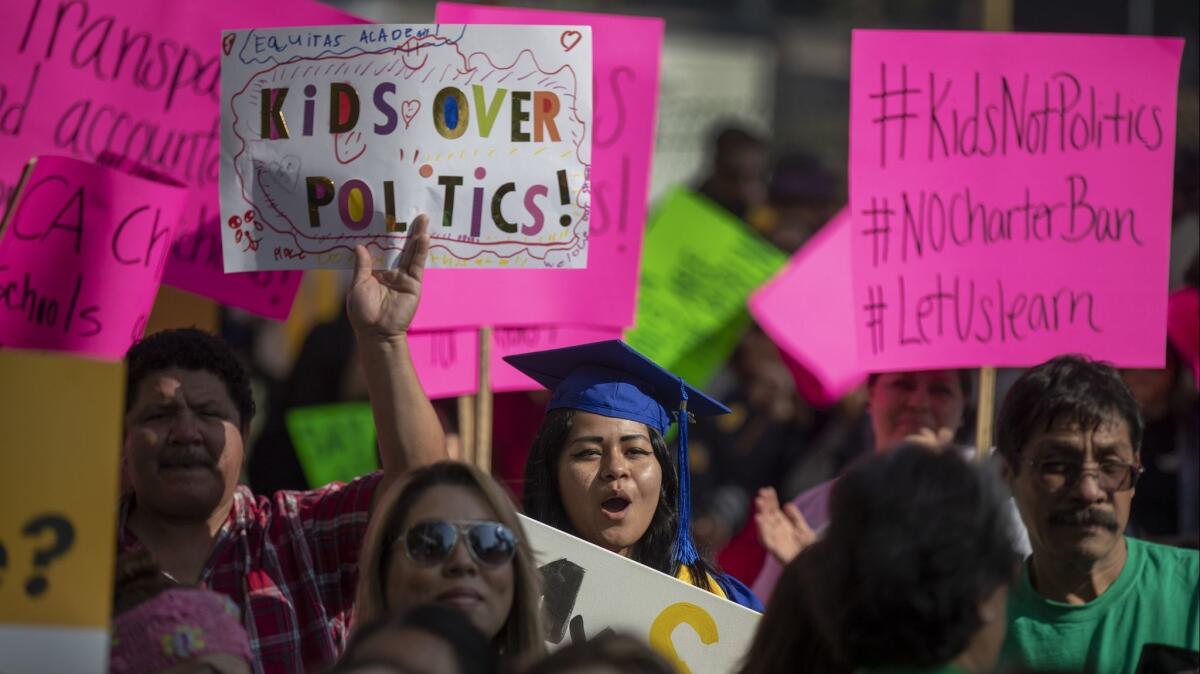Column: California’s education funding is at a record high. So why are schools short on cash?

- Share via
There may be no greater paradox in California government these days than the fiscal health of the state’s public schools. Education funding is almost certain to hit a record high when a new state budget is enacted next month, and yet local school districts are hitting the panic button when it comes to their finances.
That both things are true is a function of the complicated way the state funds education and the cost pressures that appear to be the new normal — especially worrisome because there’s compelling evidence that the status quo is unsustainable.
“There’s not a district in the state that’s not experiencing this,” said Kevin Gordon, a longtime education lobbyist. “It’s just so counterintuitive in a growing economy.”
It’s important to first understand how schools are funded. Most districts receive a combination of local, state and federal dollars. California, more than other states, relies on statewide tax revenues to pay for education — a framework cemented in 1978 when Proposition 13 capped local property taxes and schools turned to an ever-growing subsidy from Sacramento.
Newsom wants to double state spending on homelessness to $1 billion »
Gov. Gavin Newsom’s latest budget plan projects $101.8 billion in total spending — which includes both local and statewide operations — for K-12 schools. That’s a $4.6-billion boost from last summer’s enacted budget and an astounding $35-billion increase from what lawmakers approved in 2014.
Give credit where it’s due: California’s economy has steadily grown since 2010, and voters approved tax increases on the wealthy in 2012 and 2016 to help fund education.
But at the same time, a few important things have complicated the flow of dollars to the classroom. One is the rapid growth in expenses for special education. More children are qualifying for additional services, particularly those diagnosed with an autism spectrum disorder. Even preschool-age kids are entitled to services funded by existing school budgets.
The state government’s special education expenses are projected to rise 21% next year, according to the governor’s new budget. The impact on local dollars is even bigger — those funds pay for 61% of special education expenses, according to a legislative analysis.
School districts are being squeezed, too, by the rising costs of employee healthcare and pensions. Because those benefits are locally bargained with public employee unions, some argue it’s a problem of their own making. Nonetheless, the multibillion-dollar obligations are steadily growing. School districts have been required to begin paying more into the state teachers’ retirement fund to ensure its solvency. To ease that burden, Newsom’s K-12 budget proposes paying a portion of the local districts’ pension obligation.
And all of the expenses will ultimately crash into the reality of California’s demographics: The state is generally getting older, and its population of school-age children is no longer growing the way it did during most of the 20th century. By law, education dollars are linked to how many children there are in the classroom — which means funding won’t grow at a rate that can keep up with the mounting expenses.
“When you look at the dollars that reach the actual schools, the increase in overall funding is being outstripped by the increase in mandated costs,” Gordon said.
School districts in Los Angeles, Oakland and Sacramento have all sounded the fiscal alarm in recent months. And while measurements differ, there’s a consensus that California trails almost every other state in per-pupil funding. The state laws that mandate growth in school funding in most years simply aren’t keeping up with cost pressures.
“Something needs to change,” Newsom said in his State of the State speech in January. “We need to have an honest conversation about how we fund our schools at a state and local level.”
Follow @johnmyers on Twitter and sign up for our daily Essential Politics newsletter.
More to Read
Get the L.A. Times Politics newsletter
Deeply reported insights into legislation, politics and policy from Sacramento, Washington and beyond. In your inbox three times per week.
You may occasionally receive promotional content from the Los Angeles Times.











